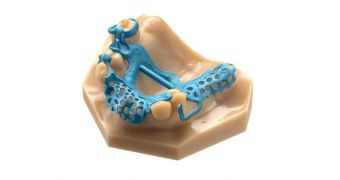The reason that some medics specialize as dentists is because removing, replacing and repairing damaged teeth is a pretty tricky process, not to mention physically demanding. There's a reason “like pulling teeth” is used to refer to very difficult tasks.
To make life easier at least when it comes to creating the molds and prototypes for dental replacement, Stratasys has launched two new 3D printers.
As with everything else, 3D printing has only recently become a part of dentistry. In fact, dentists are among the few medics who can actually use it in something concrete for their patients.
While biochemists are experimenting with potential tissue and bone replacements, those experiments are just that: potential.
Dentists have an easier time here because they can use 3D printing technology to make casts and models for surgery planning.
There's no way to 3D print a new tooth or tooth plate, not yet anyhow, but 3D printed wax castings shear off days, if not weeks, from the time it normally takes to create dental implants and prosthesis.
The two new 3D printers from Stratasys were made with exactly this in mind. They are called CrownWorx and FrameWorx.
Stratasys CrownWorx can make wax casts of crowns, bridges, and copings by jetting tiny droplets of Truecast material.
The resolution is of 5,000 x 5,000 x 8,000 DPI and the large build place can produce 40 restorations per day, or even run at night or weekends without human supervision.
Compared to molding the things with conventional means, this is very, very time-effective. It cuts the time it takes to make a case and plan a surgery from weeks to days.
The other 3D printer, Stratasys FrameWorx, is more specialized meant only to produce partial denture wax-ups, but uses the same material for it.
It does have a second TrueSupport material though. Support materials are used to make a sort of scaffold, if you will, during the printing process, and can be detached from the main print afterwards.
Many 3D prints lack the ability to actually stay still after all, even if you do layer the print bed with appropriate adhesive. Sadly, Stratasys has not given prices for either product
“These wax 3D printers and new materials are an ideal fit for small labs interested in upgrading dental casting technology,” says Stratasys Director of Global Dental, Avi Cohen.
“We believe dental labs adopting these 3D printers will benefit from the automated and digitized workflows, enabling them to cut costs while producing more restorations. These systems complement our broad system portfolio, which includes large dental 3D printers.”

 14 DAY TRIAL //
14 DAY TRIAL //